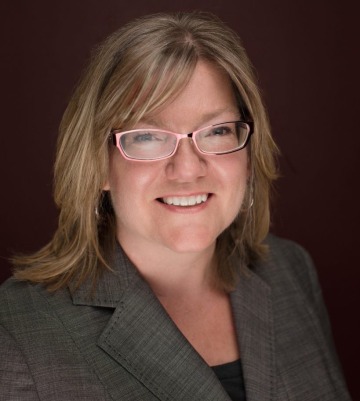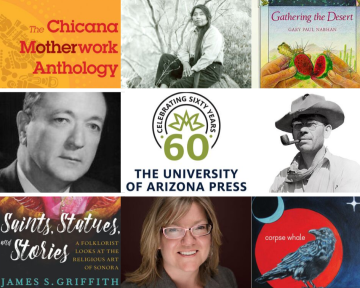Guest Column: UA Press Celebrates 60 Years of Scholarship

Kathryn Conrad, director of the University of Arizona Press

Preeminent archaeologist Emil Walter Haury first proposed the University found a formal press in 1959.

UA Press books have been part of national conversations on topics ranging from immigration to water resources to the possibility of life on other planets.
"When I was young, the old Pimas could remember a long way back in time. They did not have any writing, but they did have what is called a Calendar Stick. … Sometimes in the evenings they would look at this stick and tell what had happened in their grandfathers' time. Or they would remember a story."
With these words, George Webb introduces "A Pima Remembers," one of the first books published by the brand-new University of Arizona Press in 1959.
It was the preeminent archaeologist Emil Walter Haury who first proposed the University found a formal press. He had returned to his alma matter in 1937 to accept a faculty position in what was then the Department of Anthropology, and quickly realized that a professional publishing program was needed to share the high quantity and quality of scholarship being produced at the University, and he was relentless in his pursuit.
Then-President Richard Harvill had a unique style that included calling faculty members at odd hours. Some faculty caught on that these phone calls were great opportunities to pitch projects or describe department needs. Haury talked publishing and, in 1959, Harvill listened.
The UA Press published "A Pima Remembers" that year. The book shares the stories of Webb's Pima Indian heritage as told to him by his grandparents. It was meant to help tribal youth learn and connect with their heritage while capturing these stories for generations to come. In some ways, that book was ahead of its time, and perhaps it was the beginning of an unacknowledged agreement with the communities of our region that the UA Press would reflect all of their voices.
The pages of our books reflect the groundbreaking work of anthropologists and astronomers, historians and poets, environmental scientists and interdisciplinary scholars in indigenous and Latinx studies from around the globe. The press's roots in anthropology and its commitment to indigenous voices led it to become a leader in publishing collaborative archaeology and in indigenous studies, an interdisciplinary field that brings forward the indigenous experience and point of view. The press's commitment to place – our home at the U.S.-Mexico border – has made it a leader in border studies.
Through Sun Tracks and Camino del Sol, our two literary series, Native American and Latinx poets, writers and artists have found a publishing home. These influential series have been a platform for both established and first-time authors, including Carmen Giménez Smith, Simon Ortiz, Luci Tapahonso, Tim Z. Hernandez and Pat Mora. Through both series, the UA Press helps ensure that diverse literary voices can be heard.
Harvill understood the importance of publishing to the national standing of research universities. More than 70% of Research I universities house a university press. We are one of 81 major research institutions that has both a university press and a library that belongs to the Association of Research Libraries, reflecting our commitment to research and its dissemination. Our books are read and reviewed around the world – and we are committed to expanding that reach through open access pilot projects like Open Arizona.
Our books have been part of national conversations taking place in communities and classrooms on topics ranging from immigration to water resources to the possibility of life on other planets. We've trained dozens of students in publishing through internships in acquisitions, editing, marketing and design. Some of our past interns have gone on to have careers in publishing, both academic and commercial.
Reflecting on this 60th anniversary, I've also recognized that our authors and their work have made us part of Tucson and Southern Arizona. We've helped document the unique history and character of our shared home with books like "Songs My Mother Sang to Me," "Of Earth and Little Rain," "La Calle" and "Gathering the Desert." We've transcended the notion that academic scholarship lives within the academy. We've proven that scholarship and research can live in community, too.
Kathryn Conrad is director of the University of Arizona Press and president of the Association of American University Presses. Prior to joining the UA Press, Conrad held marketing and editorial positions at the University of Missouri Press, Algonquin Books of Chapel Hill and River Styx literary journal. Her email address is kconrad@uapress.arizona.edu.

